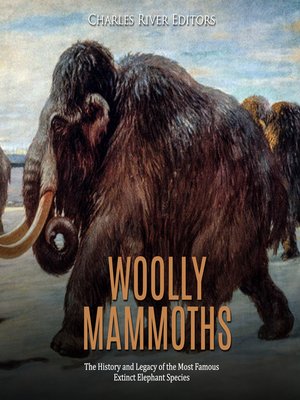Woolly Mammoths
audiobook (Unabridged) ∣ The History and Legacy of the Most Famous Extinct Elephant Species
By Charles River Editors

Sign up to save your library
With an OverDrive account, you can save your favorite libraries for at-a-glance information about availability. Find out more about OverDrive accounts.
Find this title in Libby, the library reading app by OverDrive.



Search for a digital library with this title
Title found at these libraries:
| Loading... |
It was a frosty, wintry September morning in 2012 when 11-year-old Yevgeny "Zhenya" Salinder donned his warmest quilted jacket, a knitted woolen cap, and matching mittens and headed out the door with his faithful, tail-wagging dogs in tow. Like most mornings, the kid ambled about near the Sopkarga polar weather station, an isolated region in the northern Russian Taymyr Peninsula where he resided, but this particular morning, his pace was slowed by a foul, almost eye-watering stench. Intrigued, Salinder and the dogs sniffed out the source of the strange miasma, and in the process they stumbled upon a defrosted pair of heels from an unknown creature protruding from the cold earth.
By the time Zhenya made the discovery, people had been quite familiar with the extinct giants for many years, and people across the world have seen models and depictions of them to go along with the fossils. Since Georges Cuvier recognized the specimens as an extinct elephant species near the end of the 18th century, various finds of mammoth fossils, particularly in places where they were well preserved in the cold, have made the woolly mammoth perhaps the most popular extinct animal outside of the dinosaurs. Standing around 10 feet tall and weighing several tons, woolly mammoths seem like the stuff of legend, but ancient cave art indicated that unlike dinosaurs, woolly mammoths were contemporaries of early humans, with the last ones going extinct only about 4,000 years ago. All of that explains why people have long been fascinated by woolly mammoths and have even envisioned bringing them back to life via genetics sometime in the future.






